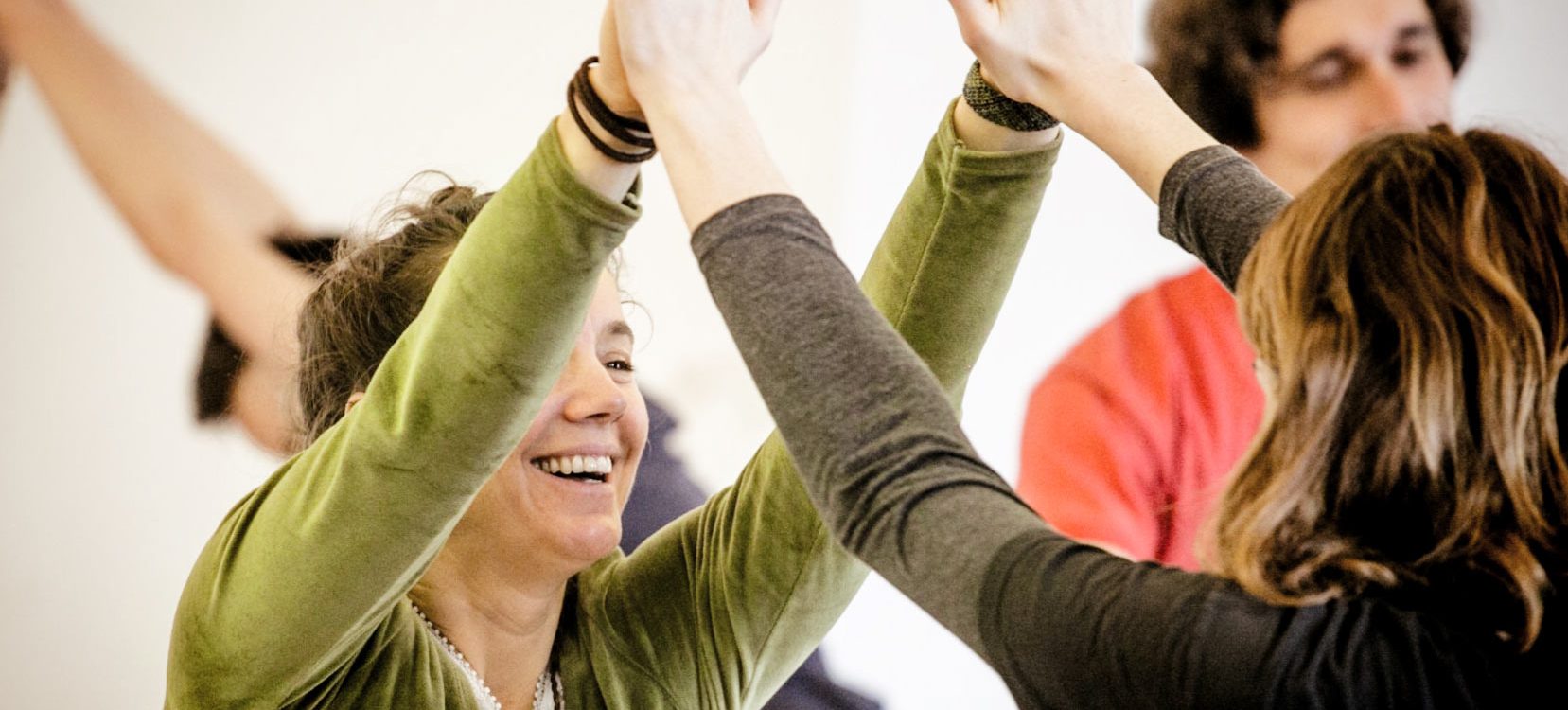
To ‘Keep in Touch’ is to Access your Greatest Power
Our bodies are the place or space in which we experience ourselves and the world around us. They are the home to our emotions, our thinking and our imagination. Our bodies have the ability to expand beyond their physical boundaries defined by skin and are made to perform miracles every second. Being touched by another person immediately brings us home, makes us aware of another part of ourselves; some more space that we did not notice before, because it’s always there and harder to notice on our own.
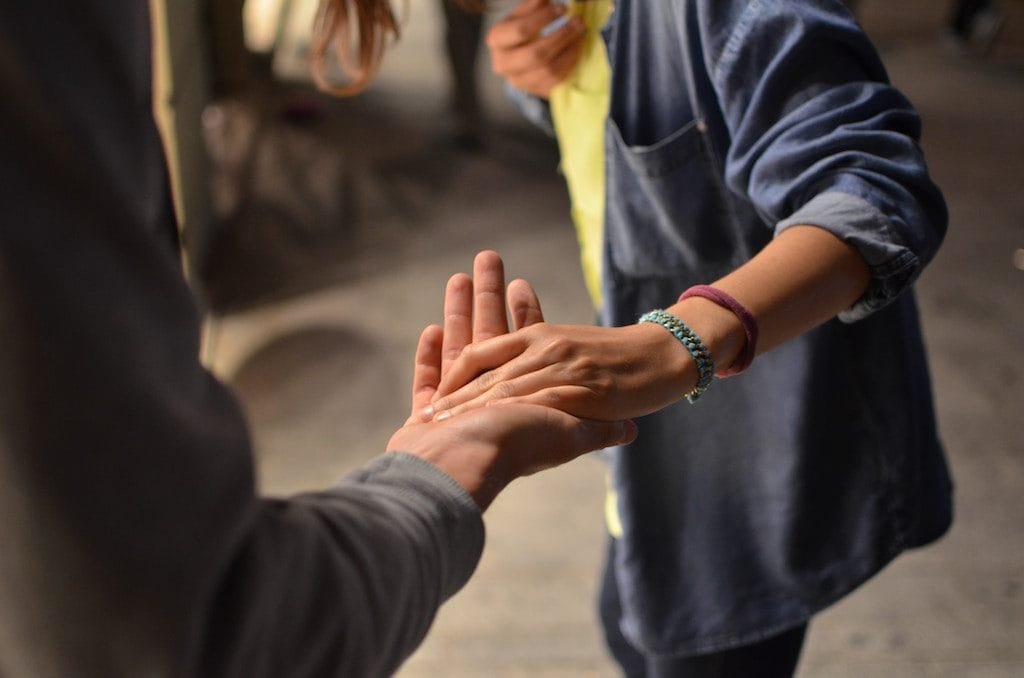
The upcoming training “Keep in Touch”, was built as a way to demonstrate the power of touch. To let people feel more connected to their own skin, to trust who they are, and be at ease, not only within themselves but also amongst others. It was also designed to remind us all that the language of touch is natural for us. When reminded, we know how to touch another person in an exact way that will lead us to deliver the message we wish to deliver. Also in ways that can give the person the feeling they’re being listened to beyond words and verbal communication.
I have given many workshops in my professional life, and in my early days, felt that touch was something I could only include in the professional courses – when I taught practitioners to touch their clients in Pantarei sessions. I had the space in that dynamic to introduce the language of touch and the richness it contains. Later however, I realized I could also include touch in workshops but, mainly at the end of the workshop when people felt more comfortable and relaxed in the group. It’s only in recent years that I have understood that touch – in the way Pantarei uses it – is so rich in opportunities and something so many of us seek, whether we are aware of it or not.

I realized that if touch is being guided and introduced for what it is – a simple, clear, playful, and direct way of communication, everybody benefits from it – the ones who are being touched and also those who touch. A hand on the shoulder, fingers that feel the skin of the neck, the experience that somebody else touches our body in a respectful, safe and unsexual way is something many of us miss and can benefit from quite a lot. It amazes me every time in a group activity, with people who meet for the first time, how in the beginning they are all closed off. Each of them is on our own, yet they are people who have gathered together for the same reason, who obviously share a common interest. When sitting together waiting for the activity to start, they don’t always feel comfortable next to each other and touch is the furthest thing from their minds.
As a teacher, I’m aware there are different ways to break the ice to make everybody feel more comfortable, but it usually takes time to create a safe place. Then the individual participating will enjoy being there, expressing themselves and trusting in me to lead the activity. After introductions, I usually let the participants begin with some physical exercises and movements in the room – to let people first of all connect with their own body, breathing and being. While for some people, movement and using their body is a relief, others find it a challenge to feel at ease with others moving around them. Nevertheless, it’s clear for me, that it loosens up the atmosphere and brings more energy into the room. I have found that introducing touch creates a new bridge; one that everybody can discover on their own, but that also connect them to others in the room, and creates a little more trust than was there moments before.
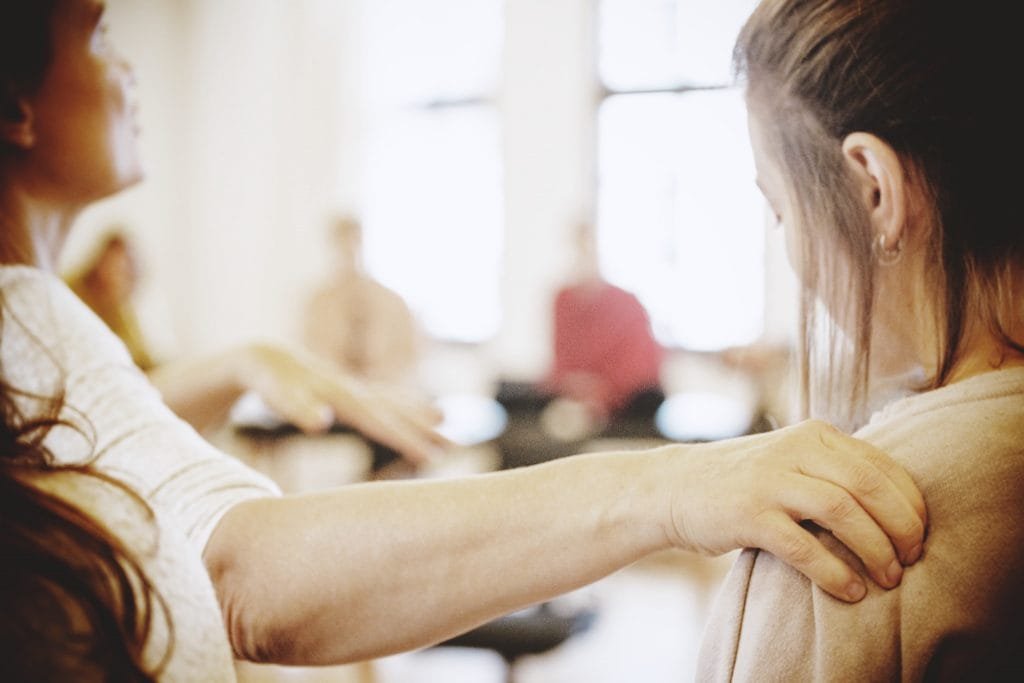
So as my teaching evolved, I dared to let the participants introduce themselves to each other through touch and I was rewarded with the ultimate short-cut, like no other I had found before. It’s immediate effect is to bring people closer together, and to have them connect to themselves. This allows them then to be comfortable in the group, which in turn supports them to utilise the power of doing something together and yet be the individuals they are at the same time.
During the exercise, I guide the participants to work in couples and to touch their chosen partner on the shoulder and neck area. It can start with simply placing their hands on this area, to sense what they find underneath their fingers. Then they can apply some pressure, that allows the participant to feel more deeply, the muscles, bones and structures that they are touching. Once this next level is reached, I ask them to feel ‘who’ the person is that they are touching? What are those shoulders telling them and what do they need and want?
Most people would read or hear this and believe they wouldn’t know how to touch, what the other person needs, or what the shoulders have to say. Yet here comes the big surprise – no matter which background we come from, touch is a language that we have all learned and now know. We communicate much better through it than we believe we can.
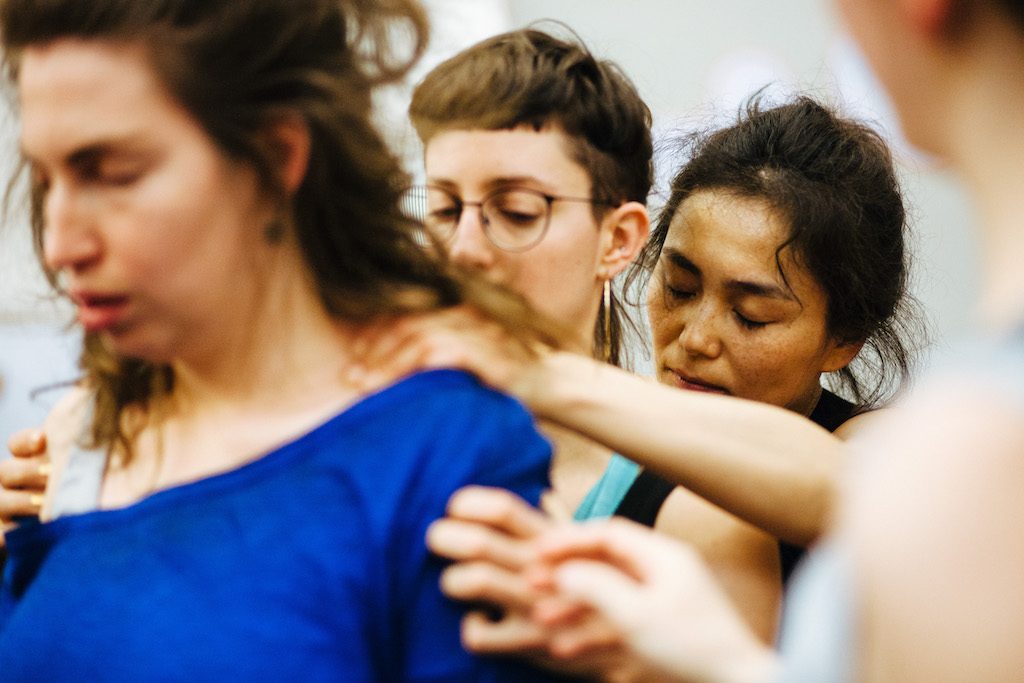
I’m always impressed with how exploring and touching the area of the neck and shoulders impacts on the atmosphere in the room and how the participants feel. The partners normally start hesitantly and than get more involved and engaged. The first person to ‘be the practitioner’ sees that it is working, no matter how inadequate they feel. When it is their turn to ‘be the client’, they are already rewarded from how well it went. The other round starts then from a different place and the connection that is happening simply gains momentum. Touch and connecting through touch works like a magic wand, that breaks through otherwise upheld walls, prejudices and assumptions and lets us be in touch with what is really there.
When the exercise comes to an end, everybody seems to be more present and visible than before. The faces are more animated and actually it becomes easy to see the other participants and to be seen. There is a bond of understanding now, that they are essentially looking for the same thing and that they have support in that from another person. There is lively chatter – the partners don’t seem to be able to stop talking to each other about their experience, what they noticed, how powerful this time was and how happy they actually are to meet and be in touch with somebody else.
Happiness is present in the room, even if some might have tears in their eyes; there is the happiness of being seen, of being touched, or of simply being noticed. People obviously feel how good it was to be connected in this way, and how much they miss that kind of connection in their daily activities. Everyone is reminded that the language of touch is a language we all actually speak. That it can really be that easy to feel more of themselves, others and the world around them.
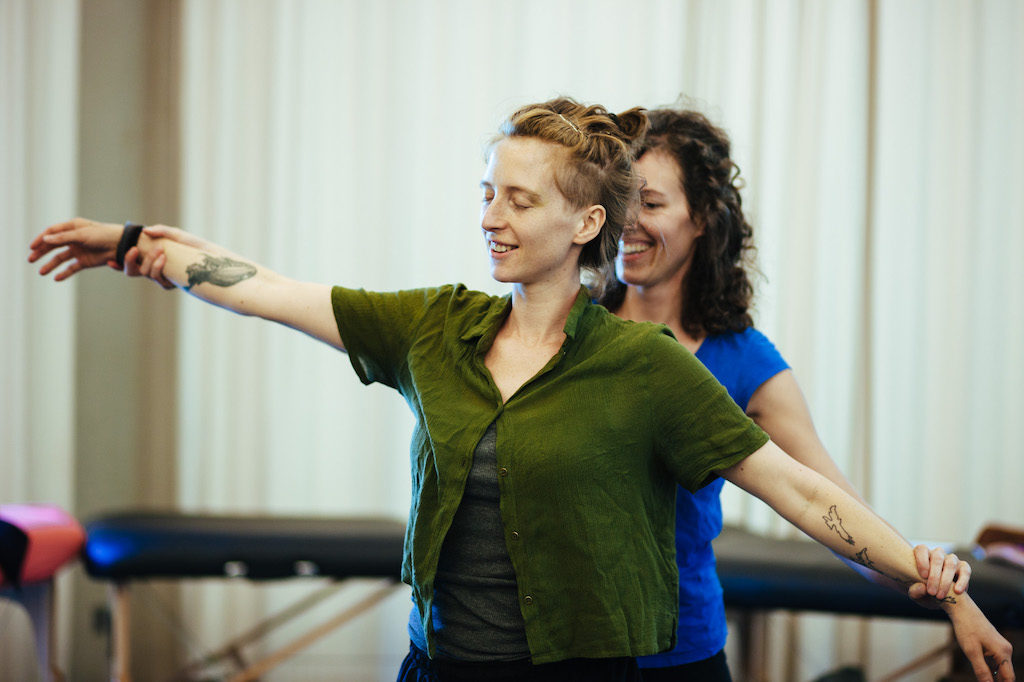
The way I introduce touch in Pantarei workshops is not with a specific technique everyone needs to perform, but rather as a language that makes everybody more connected to themselves. By touching another person, our attention expands much more easily from our normal space to a larger space. The other body reminds us that we have one too – by feeling this person underneath our hands, we touch the vast range of experiences that are within them and around them. We’re invited to stand on a grand plateau that overlooks a beautiful landscape – that of the person we touch. Some landmarks seem familiar, while others are not, but we are drawn to engage and connect, without needing to make effort. Without words, a different perspective is immediately created and we give ourselves a range of new options.
Overall during these exercises, there is a feeling of simple happiness, and confidence. The confidence to notice what surrounds me and whether I fit in or not. In the workshops from that moment on, we can work as a group, or in a team and still have space for what the individual needs. Each of the participants is unique in who they are, in their way of feeling their own experiences and in the way they feel the experience of another person. And yet, they all share a similar core skill; their ability to perceive, to notice, to feel and by this to connect, and to enjoy being who they are.
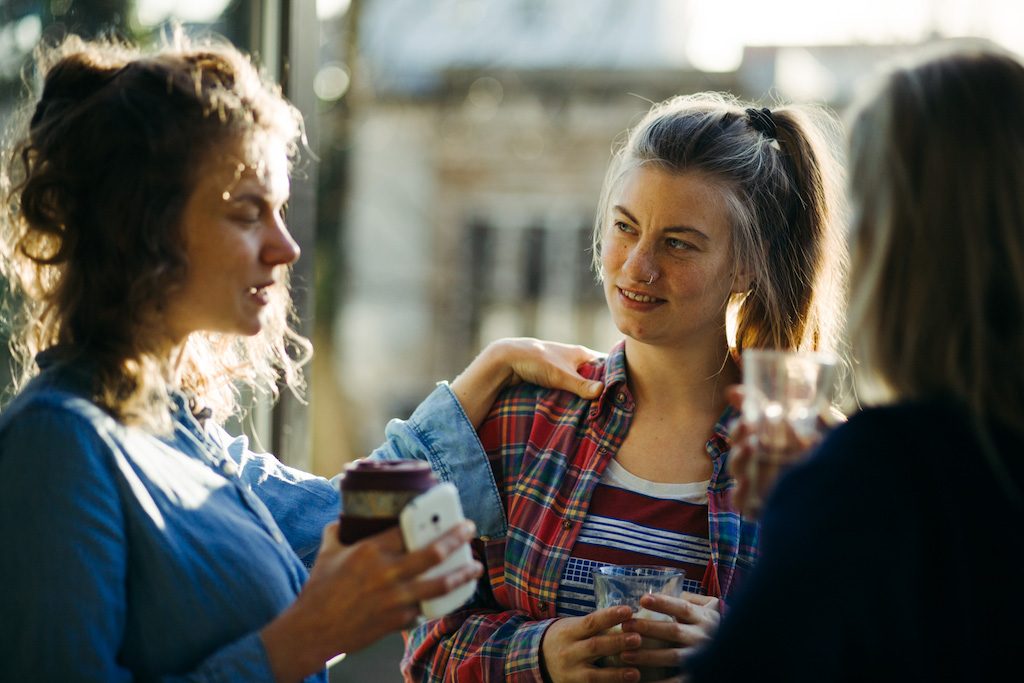
“Keep in Touch” training was designed to teach people how to stay with this ability, and to notice its enormous source of power. Touch and being touched can connect us easily to our own uniqueness and that of others; and once connected there are plenty of ways to cultivate this ability of ours, that are fundamental to what makes us human.
No matter how many times I teach these kind of workshops, I always look forward to getting in touch with the people who come to the workshops. To explore those magic moments where a group of strangers realize the power of their touch and the beauty in it is invaluable. They gain incredible trust in themselves and others in such a short time. It’s in that space where people can enjoy their individuality and uniqueness, and can experience it as something that could support their own life and as well as the lives of others.

The next Keep in Touch workshop will be held on Monday 25th February at 5.30 pm at Winsstrasse 60, Berlin. Find more information and register here.


